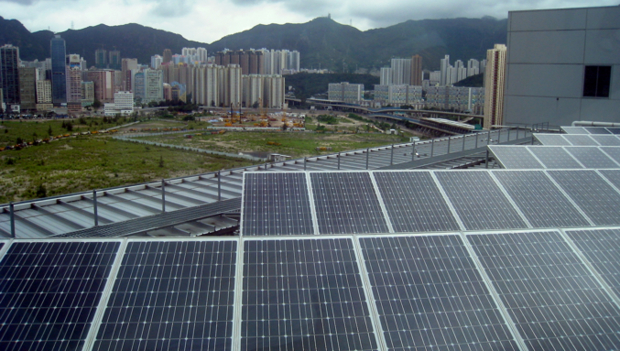The NEA predicts that the nation’s solar power capacity will hit 150 gigawatts by 2020. This year, it is expected to install 23GW to 25GW, according to Anand.
In 2015, China overtook Germany to become the world’s leader in solar power production, Xinhua has reported.
China’s solar panel manufacturers lead the world in production. By boosting its domestic market, China cuts its reliance on foreign markets, which is particularly important in light of recent trade conflicts with the US and Europe.
“It’s a self-fulfilling prophecy,” Anand said.
Photovoltaic module production also increased to 37.8% in the first half of the year to 27GW of capacity, according to the China Photovoltaic Industry Association.
Cheap government capital and access to supply chains, have led Chinese module manufacturers to significantly drive down costs, according to Tyler Ogden, a solar analyst with Lux Research.
“Having local manufacturing capacity also leads to cheaper installations costs due to shortened supply chains,” Ogden said. “However it’s important to note that despite the reports of China’s top position, systems are subject to curtailment and some operators have reported delays in feed-in tariff payments. Although the numbers are impressive, China still has problems to tackle.”
One reason for the unexpected uptick in utility-grade solar capacity in the first half of 2016 was that China’s “feed-in tariff” was set to decrease for projects not completed by 30 June.
Feed-in tariffs are incentives for solar installations because they guarantee a set price per gigawatt will be paid by utilities for solar power produced. In China’s case, the tariff dropped depending on the region of a province. Some Chinese provinces produce more solar power than others because they are in sunnier regions. The ones that produce more have lower feed-in tariff rates.
China’s move to increase its solar power generation comes at the same time the country is pressing ahead in other areas, including supercomputing.
China maintained its first-place ranking among the world’s top supercomputers makers, according to the 47th edition of the Top 500 list.
China’s Sunway TaihuLight supercomputer is the new number one system, with 93 petaflop/s (quadrillions of calculations per second).
IDG News Service








Subscribers 0
Fans 0
Followers 0
Followers